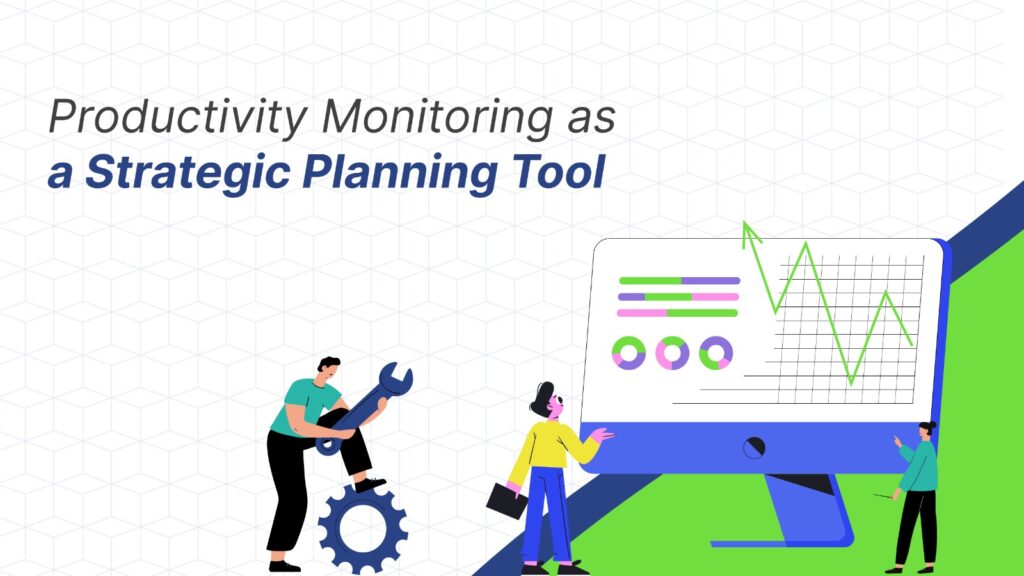Productivity Monitoring as a Strategic Planning Tool
Introduction
Modern businesses need data-driven insights for growth. Therefore, many organizations now adopt productivity monitoring for strategic planning. By doing so, they can analyze work patterns, identify inefficiencies, and allocate resources effectively. Moreover, these insights support management decisions that directly impact competitiveness. When paired with reliable tools like SAMPAT, companies can streamline operations and reduce unnecessary costs. Consequently, strategic decisions become more evidence-based. Thus, monitoring productivity is no longer optional but essential for sustaining long-term business success.
Importance of Productivity Metrics
Organizations often struggle without reliable performance metrics. However, productivity data provides clarity across different teams. Managers can assess workload distribution, understand employee contributions, and measure task efficiency. Additionally, these insights allow companies to design better policies that enhance team performance. With monitoring, bottlenecks are identified early and resolved effectively. As a result, productivity becomes more predictable. Moreover, transparent performance measurement builds trust among employees. Therefore, consistent metrics provide a foundation for better planning. Clearly, metrics are indispensable for strategic decision-making.
Enhancing Strategic Decisions
Data-driven planning empowers leadership. For instance, monitoring highlights underperforming areas needing immediate attention. Furthermore, these insights support decisions that align with organizational objectives. Instead of relying on assumptions, leaders use measurable outcomes to guide strategy. Because of productivity monitoring, companies can prepare for challenges with confidence. Consequently, long-term growth strategies become more achievable. Additionally, using structured data helps businesses minimize risks during decision-making. Hence, organizations with solid monitoring frameworks consistently outperform those without them. Effective strategies stem from reliable insights.
Resource Allocation Insights
Allocating resources without data is risky. However, productivity monitoring supports informed distribution of staff, budget, and time. Leaders can detect which departments require more investment. Additionally, underutilized areas can be restructured to improve efficiency. Therefore, organizations avoid overloading teams or wasting resources. When resources align with performance data, results improve across operations. Moreover, these insights allow managers to plan future requirements. Consequently, resource allocation becomes proactive rather than reactive. Hence, monitoring provides strategic clarity while improving organizational balance and overall sustainability.
Role in Workforce Management
Workforce productivity is essential for competitiveness. By monitoring work patterns, managers can identify trends and optimize staff deployment. Moreover, organizations can support employees with tools that enhance efficiency. Therefore, productivity monitoring improves both individual and team performance. Additionally, patterns such as overwork or underutilization become visible. As a result, corrective actions are taken faster. Furthermore, these adjustments strengthen employee engagement and satisfaction. Hence, workforce management transforms into a strategic advantage. Clearly, productivity monitoring influences workforce strategies positively and sustainably.
Technology and Monitoring Tools
Technology enables real-time performance analysis. For example, platforms like SAMPAT provide detailed productivity data across IT and non-IT assets. Managers gain visibility into utilization, downtime, and performance gaps. Furthermore, integration with dashboards simplifies data interpretation for leaders. Consequently, organizations spend less time collecting information and more on applying insights. Moreover, automated notifications ensure timely decisions. Hence, monitoring tools empower managers to optimize planning continuously. With reliable platforms, productivity monitoring supports innovation, reduces operational risks, and enhances overall decision-making capabilities.
Driving Long-Term Growth
Strategic growth requires foresight. Productivity monitoring offers businesses the insights needed to forecast challenges. Moreover, leaders can align operations with changing market demands. Therefore, organizations using monitoring tools remain agile and adaptive. In addition, long-term strategies become grounded in measurable data. Consequently, leadership avoids unnecessary risks that weaken competitiveness. Furthermore, growth initiatives achieve better results when backed by clear productivity insights. Hence, monitoring drives sustainable expansion. By embracing productivity monitoring for strategic planning, companies gain lasting advantages in evolving markets.




